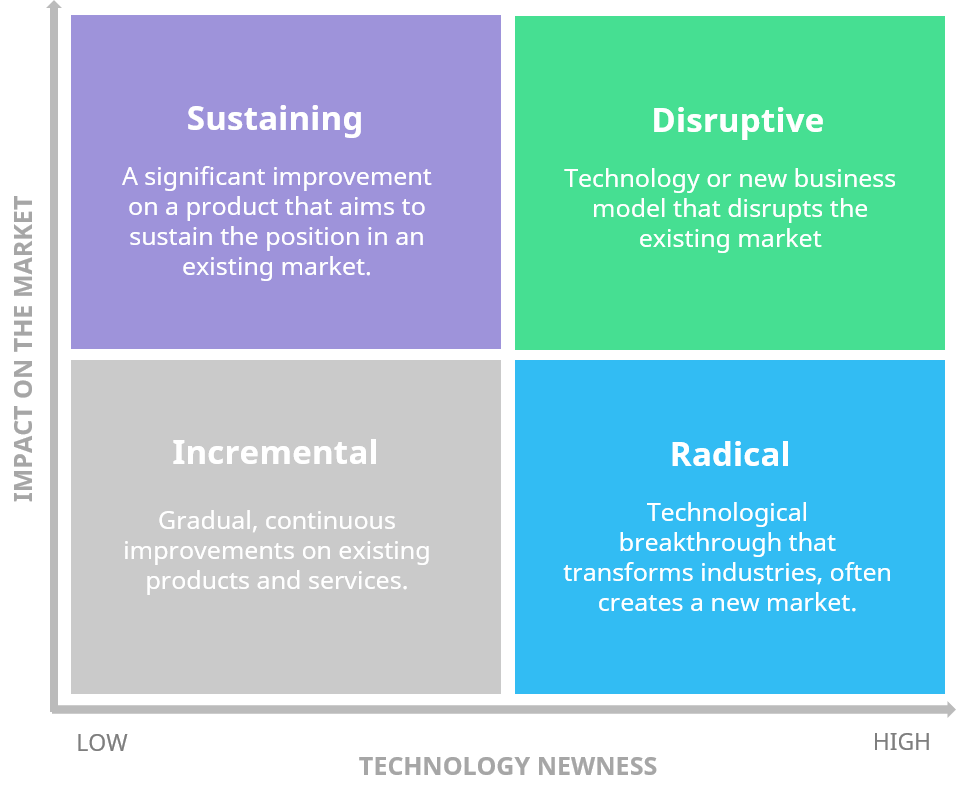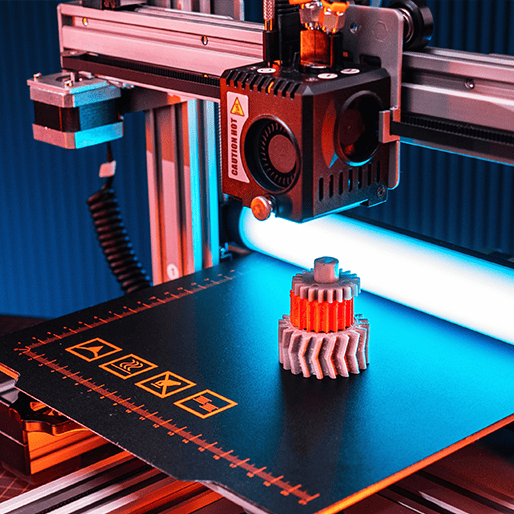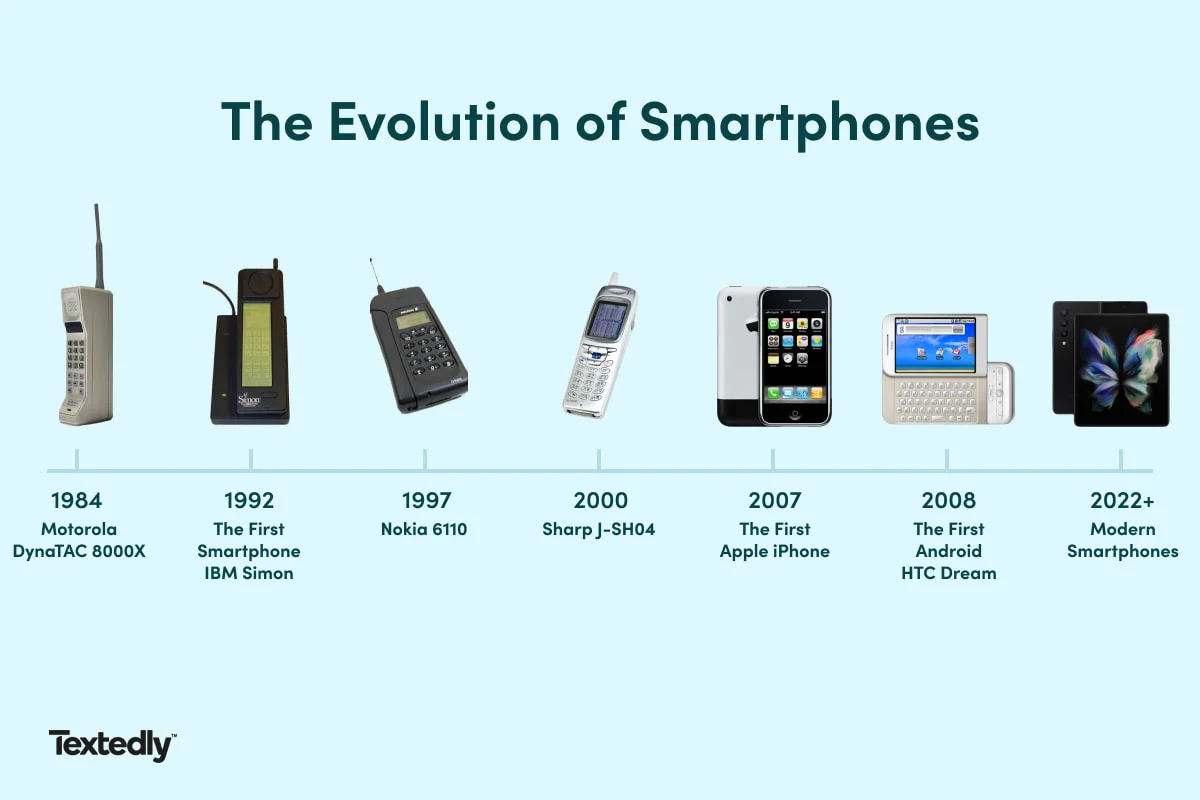Have you heard of Radical Innovation? Here is the best example of radical innovation that has changed the world completely!
When it comes to making progress, the pace can often be slow. It is why radical innovation appeared to address the need for rapid advancement in history and break free from the limitations of the status quo.
It is time to pay attention to the essence of radical innovation and its benefits. Let's be fair, who knows, you might be the next radical innovator.
Table of Contents
- What is Radical Innovation?
- What are the Different Types of Radical Innovation?
- What are the Characteristics of Radical Innovation?
- 6 Most Successful Examples of Radical Innovation
- Key Takeaways
- Frequently Asked Questions
What is Radical Innovation?
Radical innovation refers to a type of innovation that involves the development of entirely new products, services, processes, or business models that significantly disrupt or transform existing markets or industries. It can be understood that radical innovation creates new ones from scratch.
This process is quite different from incremental innovation, which involves making gradual progress and advancements to existing products, services, or processes. Incremental innovation also requires a shorter time and lower cost than radical innovation.

Radical Innovation vs. Disruptive Innovation
The question is, which type of innovation applies to existing markets and existing technologies? It's disruptive innovation.
So, it is common to see people get confused between radical innovation and disruptive innovation. The following table shows a brief comparison between these terms.
| Feature | Radical Innovation | Disruptive Innovation |
| Scope | Fundamentally changes the way something is done | Improves an existing product or service in a way that makes it more affordable or accessible to a wider range of customers |
| Target market | New market or segment | Existing market |
| Risk | High | Low to medium |
| Time to market | Longer | Shorter |
| Incumbents | Often ignored or dismissed by incumbents | Can be disruptive to incumbents |
| Impact | Can revolutionize an industry | Can displace existing products or services |
What are the Different Types of Radical Innovation?
Radical innovation emerged in almost all aspects of the economy. There are four main types of radical innovation when it comes to
- Product Innovation: This involves creating entirely new products or drastically changing existing ones. Taking the transition from traditional film cameras to digital cameras is an example of radical innovation.
- Service Innovation: Radical service innovations often involve creating new ways of delivering services or entirely new service offerings. For instance, the emergence of ride-sharing services like Uber and Lyft disrupted traditional taxi services.
- Process Innovation: Radical process innovations aim to revolutionize the way things are done within an organization. An example of radical innovation is the adoption of lean manufacturing principles in the automotive industry, which significantly improved efficiency and reduced waste.
- Business Model Innovation: This involves reimagining the fundamental way a company creates and captures value. Airbnb, another example of radical innovation, introduced a novel business model by enabling individuals to rent out their homes to travelers, disrupting the traditional hotel industry.

What are the Characteristics of Radical Innovations?
Racial innovations have unique characteristics. If you are thinking of placing a best in the field of radical innovation, take a look at the following list.
Disruptive Impact
Radical innovations often challenge the existing market leaders and disrupt established business models. They can create a significant competitive advantage for the innovators and may force incumbents to adapt quickly or risk obsolescence.
Fundamental Change
Radical innovations represent a fundamental shift in thinking and approach. They don't just improve upon existing solutions; they introduce entirely new paradigms, which can be difficult for competitors to replicate.
High Risk and Uncertainty
The risk associated with radical innovation stems from the unknowns involved. Will the market accept the innovation? Is the technology feasible? Will the investment pay off? These uncertainties make radical innovation a high-stakes endeavor.
Resource-Intensive
Developing and implementing radical innovations often requires significant resources, including substantial financial investments, research and development efforts, and recruiting top talent. It may involve years of development before a viable product or service emerges.
Transformative Potential
Radical innovations have the potential to reshape industries, improve quality of life, and solve complex global challenges. They can create entirely new markets or drastically change existing ones.
Market Creation
In some cases, radical innovations create markets where none existed before. For example, the introduction of personal computers and smartphones created entirely new industries and ecosystems.
Long-Term Vision
Radical innovation is often driven by a long-term vision rather than immediate gains. Companies and individuals pursuing radical innovations are willing to invest in research and development over extended periods.
Ecosystem Impact
The introduction of radical innovations can trigger a ripple effect throughout entire ecosystems. Suppliers, distributors, regulators, and even societal norms may need to adapt to accommodate the changes.

6 Most Successful Examples of Radical Innovation
These examples illustrate how radical innovation can transform industries, create new markets, and change the way we live and work. They also showcase the importance of customer-centricity, long-term vision, and risk-taking in pursuing radical innovation.
#1. The 3D Printing Technology
An example of radical innovation is the introduction of 3D printing technology in the market in 1988. It is also known as additive manufacturing, widely used in various industries.
Unlike traditional manufacturing, where economies of scale favor large production runs, 3D printing enables cost-effective production of single, unique items, allowing personalized mass production.
In addition, 3D printing has revolutionized healthcare by enabling the production of patient-specific implants, dental prosthetics, and even human tissues and organs.

#2. The Digital Camera
Nowadays, it is hard to encounter film cameras. Why? The answer is the popularity of digital cameras, another excellent example of radical innovation. The first company to come up with a digital camera prototype in 1975 was Kodak, later developing the first-megapixel sensor. Until 2003, digital cameras outsold film cameras.
Digital cameras have all the functions of film cameras, plus more advanced features. Captured images can be instantly checked on the monitor and, if necessary, retaken, with no need to buy film, which leads to lower cost and more convenience.

#3. The Electric Car
Decades ago, many people believed that there was no replacement for petrol cars. However, Tesla proved the opposite.
The increasing popularity of electric vehicles (EVs) proves the moves of Elon Musk are brilliant. An electric car is a great example of radical innovation. It promises a great sustainable energy solution. It offers high-performance, long-range, and innovative technology.
Tesla's long-term vision goes beyond cars; it includes sustainable energy production and storage solutions. The company aims to revolutionize the entire energy sector.

#4. E-Commerce
The emergence of the Internet led to the boom of E-commerce, which totally transformed consumer habits. The pioneer of e-commerce, Amazon is the best example of radical innovation in terms of business model transformation.
Amazon diversified into various product categories beyond books, including electronics, clothing, and even cloud computing services (Amazon Web Services). Plus, The membership model of Amazon Prime in 2005 has reshaped e-commerce loyalty and consumer behavior.

#5. Smartphone
Examples of breakthrough innovation? We can't ignore smartphones.
Prior to the smartphone, mobile phones were primarily instruments for voice calls and text messaging. The introduction of smartphones ushered in a paradigm shift by introducing an intuitive touch-screen interface, enabling mobile web browsing, and nurturing a flourishing app ecosystem.
One of the most successful smartphone producers is Apple. IPhone 4, first appeared in 2007, and its later versions remain the best-selling smartphone in major markets such as China, the US, the UK, Germany, and France. The iPhone has generated huge profits for Apple, making it one of the world's most valuable publicly traded companies.

#6. Interactive Presentation
"Death by PowerPoint" is a common phenomenon often used to describe poor presentation design, leading to poor audience engagement. That is where the interactive presentation came from. It is also considered a successful example of radical innovation regarding communication and education technology.
AhaSlides is one of the most popular interactive presentation platforms that encourage audience participation, making the audience active participants rather than passive listeners. This involvement can include answering questions, participating in polls, or engaging in discussions.
Key Takeaways
The world and technology are changing so fast, and there is always room for new radical innovations. We can believe in promising radical innovations that can transform daily life and address pressing global issues.
Frequently Asked Questions
What is an example of a radical change in life?
An example of a radical change in life could be a person deciding to quit their corporate job and pursue a career as a full-time artist. It may require learning new skills, adjusting to an unpredictable income, and adopting a different daily routine. Such a decision represents a fundamental shift in their life trajectory and can have far-reaching personal and professional consequences.
What is the risk of radical innovation?
The risks of radical innovation include financial risk, uncertainty, market risk, competitive response, resource intensity, failure risk, time-to-market, regulatory and legal hurdles, adoption challenges, ethical and social implications, market timing, and scale-up challenges.
How Can Organizations Foster Radical Innovation?
To foster radical innovation, organizations should nurture a creative culture, invest in R&D, encourage cross-disciplinary collaboration, heed customer input, embrace failure as a learning opportunity, and prioritize long-term vision.
Ref: Vinco








